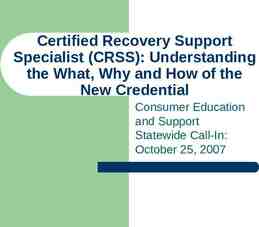Ethical Debate: Responsibilities in Treating Transgender Voice Clients
12 Slides642.34 KB

Ethical Debate: Responsibilities in Treating Transgender Voice Clients Regina Thomas, Jairus-Joaquin Matthews, Ph.D., CCCSLP, Ruth Ogbemudia, Kylee Myers, Kelly Sanderson, Elena Freeman

Disclosure The authors of this presentation acknowledge that there are no known conflicts of interest associated with this research.

Objectives Synthesize key legislation and professional policy documents that address the issue of transgender voice services. Compare opposing viewpoints of medical and educational necessity of transgender voice therapy. Develop an action plan to clarify the ethical decision making process in the treatment of transgender voice therapy.

ASHA Code of Ethics Principle of Ethics 1(C): “Individuals shall not discriminate in the delivery of professional services or in the conduct of research and scholarly activities on the basis of race, ethnicity, sex, gender identity/gender expression, sexual orientation, age, religion, national origin, disability, culture, language, or dialect.”

ASHA Code of Ethics Principle of Ethics 3(B): “Individuals shall avoid engaging in conflicts of interest whereby personal, financial, or other considerations have the potential to influence or compromise professional judgment and objectivity.” Could a clinician’s personal beliefs qualify as a potential conflict of interest?

ASHA Scope of Practice: We Do This Type of Work Speech-language pathologists provide clinical services that include the following: Modification or enhancement of communication performance (e.g., accent modification, transgender voice, care and improvement of the professional voice, personal/professional communication effectiveness)

But Is This a Voice Disorder? A voice disorder occurs when voice quality, pitch, and loudness differ or are inappropriate for an individual's age, gender, cultural background, or geographic location (Aronson & Bless, 2009; Boone, McFarlane, Von Berg, & Zraik, 2010; Lee, Stemple, Glaze, & Kelchner, 2004). (ASHA Practice Portal)

The Affordable Care Act (ACA)* Prohibits sex discrimination, including discrimination based on gender identity, transgender status, or gender stereotypes. Prohibits the majority of health insurance companies and healthcare providers from discriminating against you, including refusing to cover transition-related treatments or refusing to treat you consistently with your gender identity. *At the time of this research, it appears that ACA (2010) is highly susceptible to repeal in the near future

Voice Treatment Coverage via Private Insurance Despite the non-discriminatory language within the ACA, many private insurance companies do not cover voice services for transitioning individuals. Medicare, Aetna, and United Healthcare do not cover voice treatment stating that it is a “not medically necessary” or “cosmetic” part of the transitioning process

Reflection Questions Is this type of service within my scope of practice? Am I ethically obligated to treat this client? Am I equipped to achieve and maintain the highest level of professional competence and performance? Are there factors that would prevent me from providing quality services? Do I have the resources, framework, and referral sources to do so?

References American Speech-Language Hearing Association. (2016). Code of ethics [Ethics]. Available from www.asha.org/policy. American Speech-Language-Hearing Association. (2016). Scope of practice in speechlanguage pathology [Scope of Practice]. Available from www.asha.org/policy/. American Speech-Language Hearing Association (ND). Practice Portal: Voice Disorders. Retrieved from http://www.asha.org/Practice-Portal/Clinical-Topics/Voice-Disorders/ Aronson, A. E., & Bless, D. M. (2009). Clinical voice disorders. New York, NY: Thieme Medical Publishers. Boone, D. R., McFarlane, S. C., Von Berg, S. L., & Zraick, R. I. (2010). The voice and voice therapy. Boston, MA: Allyn & Bacon. Davies, S., & Goldberg, J. M. (2006). Clinical aspects of transgender speech feminization and masculinization. International Journal of Transgenderism, 9(3-4), 167–196. Lee, L., Stemple, J. C., Glaze, L., & Kelchner, L. N. (2004). Quick screen for voice and supplementary documents for identifying pediatric voice disorders. Language, Speech, and Hearing Services in Schools, 35, 308–319.

References Medical Clinical Policy Bulletins. (2017). Gender reassignment surgery. Retrieved from http://www.aetna.com/cpb/medical/data/600 699/0615.html National Center for Transgender Equality. (2014). Medicare and transgender people. Retrieved from http://www.transequality.org/know-your-rights/medicare Patient Protection and Affordable Care Act, 42 U.S.C. § 18001 et seq. (2010). UnitedHealthcare. (n.d.). Gender dysphoria (gender identity disorder) treatment. Retrieved from https://www.unitedhealthcareonline.com/ccmcontent/ProviderII/UHC/en-US/Assets/Provi derStaticFiles/ProviderStaticFilesPdf/Tools%20and%20Resources/Policies%20and%20Pr otocols/Medical%20Policies/Medical%20Policies/Gender Identity Disorder CD.pdf






